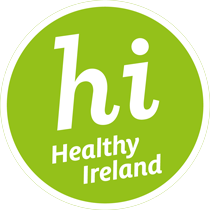You are here
Galway and Roscommon University Hospital Group’s meeting with Public Representatives
Management from the Galway and Roscommon University Hospital Group met with Oireachtas and Regional Health Forum West members from Galway and Roscommon today (Friday 25 January) to review the development of the Group after one year and to outline the priorities for the Group in 2013.
Bill Maher, CEO of the Galway and Roscommon University Hospitals Group outlined the activities of the Group since it was set up on 09 January 2012. He said, “In 2012, the Group provided acute hospital services to people living in Roscommon and Galway and further afield as GUH is a designated supra regional centre for cancer and cardiac services. The number of patients seen and treated was above the targets set out in the service plan for the year and all of this was achieved with a reduced budget and fewer staff. The numbers treated in the hospitals in the Group were as follows:
Patients treated in 2012
- 51,024 inpatients (up 1%).
- 101,086 daycases (up 10%).
- 286,966 outpatient appointments (up 4%).
- 87,763 Emergency Department presentations (up 2%).
- 5,912 Urgent Care Centre presentations at Roscommon Hospital.
- 5,439 babies delivered (down 2%).
“One of key achievements for the Galway and Roscommon University Group in 2012 was to meet the Department of Health’s Special Delivery Unit (SDU) target for inpatient waiting lists which is that no adult should wait longer than 9 months, children should not wait longer than 20 weeks and people requiring scopes should be seen within 13 weeks. In order to meet this target, the Hospital Group had to see 13,944 patients by the end of September and this target was successfully reached. We also were able to meet the waiting list targets for the remainder of the year and this has been possible by maximising the potential contribution of each hospital in the Group.
Emergency Department
“In 2012 we also made progress with the length of time patients had to wait for admission from the ED; in GUH in February there were on average 24 patients waiting for admission at 8am and by November this number had reduced to 12. Portiuncula Hospital made great strides in improving the length of time that patients spend in the ED, even though the numbers attending increased from 21,229 attendances in 2011 to 22,892 attendances in 2012. In December on average over 89% of patients attending the ED in Portiuncula were seen and discharged within 6 hours.
Key Service Developments
“Some of the key service developments across the Group in 2012 include the introduction of Urology Services at Roscommon Hospital along with extended Endoscopy Services, extended Plastic and Reconstructive Surgery Services, Sleep Studies, Nurse Prescribing, extended Dental Surgery and an upgrade of the X-ray System.
“At Portiuncula Hospital Ballinasloe the Elective Surgery Programme and the Productive Operating Theatre Programme commenced and we opened the newly refurbished Paediatric Unit. In addition, new state of the art high definition equipment was installed which means that we can now treat an expanded range of minimally invasive or keyhole surgery procedures which have many benefits for patients such as reduced post operative pain and quicker recovery.
“At Galway University Hospitals we developed a cancer strategy group; we officially opened the extended neonatal unit which has a capacity for 17 cots and significantly reduces the need to transfer babies to other neonatal units; we developed a management programme for newly appointed and existing Nursing and Midwifery Managers to enhance their pivotal role. We launched a joint pilot with Community Services to provide specialised rehabilitation for patients with stroke in their homes, reducing their hospital stay. We also introduced a new Musculoskeletal Clinic to assist with the management of orthopaedic waiting lists with an additional 50 patients being seen per week. We started a new clinic for patients with Inflammatory Bowel Disease and in November we opened a Theatre Admission Lounge which means that selected patients who are pre-assessed for surgery are now able to check in at a dedicated area in the theatre block, get changed and walk straight into theatre to have their procedure done.
Establishing the Group
“In terms of establishing the Group, we have integrated services within the Group, we have put corporate and clinical governance arrangements in place, we have developed the Clinical Director structure and support mechanisms and introduced a performance management framework for each hospital, directorate and department which is reviewed and updated every month.
In June the Minister of Health announced the appointment of Mr Noel Daly to the role of Chair of the Galway and Roscommon University Hospital Group as the first step to the establishment of hospital trusts as part of the Government’s programme to reform for the health service. The remit of the Board includes developing effective corporate and clinical governance structure for the Group along with the quality and safety of systems of care in place for patients of the Group; we anticipate that the remaining members of the Board will be announced early in 2013.
Resources
“The budget for the Group for 2012 was €287m which was a reduction of €25m on the previous year and there was also a deficit from 2011 which meant that the actual challenge for the year was €35m. Every effort was made to bring our expenditure back in line with our revised budget with a particular focus on income collection, procurement savings and savings on premium payments, overtime and agency costs; we reduced our expenditure by over €2m compared to last year. By end of the year the overspend for the Group, adjusting for income budgets not implemented and once offs, was €29.8m.
The Group Whole Time Equivalent number (or the number of jobs when all part-time arrangements are added to full-time) at the end of December was 3,951. This is 105 fewer WTEs (2.59%) when compared to January 2012. At the end of the year the Group was operating below its ceiling of 3,980 as a result of stringent monitoring of employment levels while at the same time working with the National Employment Control Group to fill essential posts which are core to front-line services to patients. We also reduced absenteeism across the Group from 5.16% at the beginning of 2012 to 4.69% at the end of December.
Priorities for 2013
Our priorities for 2013 are to improve access to services for patients and this means working on admission times from the Emergency Departments, maintaining the inpatients waiting time targets (which includes a reduction to 8 months wait time for adults) and meeting the SDU’s outpatient waiting time target which is that no patient should wait longer than 12 months by the end of November.
“We will face challenges including the implementation of the Higgins report on the grouping of hospitals which has yet to be published. We will work on developing a Group strategy and to securing earned autonomy as part of the progression towards becoming an independent Trust.
“We will also deliver our targets under the 2013 service plan which is being worked on at the moment – we are awaiting details of our budget for the year and once we know that we can plan accordingly. While we have to run the business end of the organisation like a company, our focus on all times is the patient and ensuring that as many services as possible are provided locally while also making sure that specialised care is provided in the most appropriate location.”

